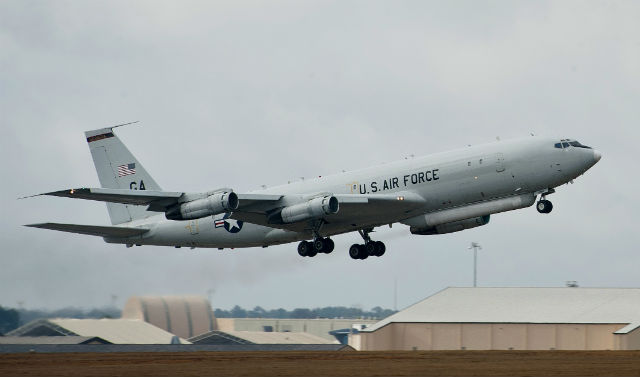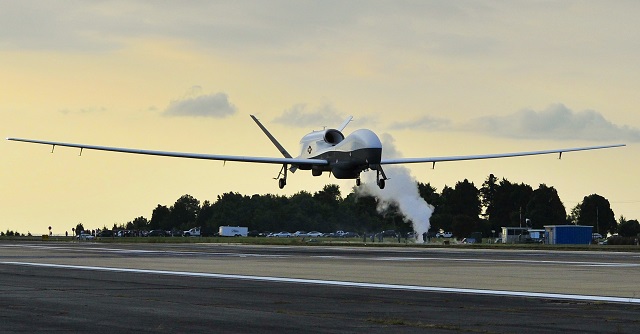Members of Congress have cautioned the US Air Force against “pursuing multiple radar technologies concurrently” as it explores options for replacing the Northrop Grumman E-8C “JSTARS” surveillance, battle management and command and control platform.
The air force has decided to move forward with a radar-carrying business jet concept – over 17 alternatives considered in 2011, including the RQ-4 Block 40 Global Hawk – to replace the aging E-8C, which first served in Operation Desert Storm in Iraq and Kuwait in 1991.
However, the service has pushed back the replacement platform's planned entry into service and the latest acquisition plan calls for initial operational capability (IOC) by the fourth quarter of fiscal year 2024 with all 17 new-generation aircraft in place no later than mid-2028.
That’s too long, according to the US House Armed Services subcommittee on tactical air and land forces, which expressed concern about structural integrity and fatiguing of the current fleet, which is based on second-hand Boeing 707 airliners.
“Under the most optimistic scenarios, the department can expect a shortfall of 10 JSTARS aircraft in its fleet of 16 operational aircraft by late fiscal year 2025,” the panel said in a legislative proposal this week.

Today's E-8C employs the side-looking Northrop APY-7 passive electronically scanned array antenna
US Air Force
The air branch’s latest budget proposal delays initial fielding of the E-8C’s replacement by one year compared to last year’s plan. The subcommittee wants the air force to accelerate fielding IOC to 2022 or 2023 and it points to the two-vendor radar technology maturation programme as one speedbump.
“If the air force believes that alternative radar capabilities should be pursued for risk mitigation or capability enhancements in the future, the air force should pursue such an approach outside of the [JSTARS Recap] programme of record, with the ability to incrementally integrate in the future if necessary,” the committee says in a 19 April legislative proposal.
In March, the air force awarded a contracts worth $70 million to Northrop Grumman Electronic Systems and worth $60 million to Raytheon Space and Airborne Systems to spend 18 months maturing each synthetic aperture radar/moving target indicator (SAR/MTI) radar.
Industry sources say Raytheon’s “Skynet” sensor, a derived from the Advanced Airborne Sensor (AAS) fielded on the US Navy's Boeing P-8A Poseidon, could be more mature.
Less is known about Northrop’s counter-offer, except that it builds on technology developed for the multi-platform radar technology insertion programme (MP-RTIP), vehicle and dismount exploitation radar (VADER), and MQ-4C broad area maritime surveillance (BAMS) sensor.
Northrop has repeatedly declined to discuss its JSTARS radar solution and won't say if it is based on MP-RTIP, which it jointly developed with Raytheon. A justification and approval (J&A) notice that accompanied the radar contracts last month makes specific mention of Northrop's 360°, rotating ZPY-3 Multi-Function Active Sensor, which recently completed an operational assessment on the unmanned MQ-4C Triton maritime patrol airplane.

Northrop Grumman MQ-4C Triton
US Navy
According to that document, the ultimate radar must be ready for integration on the E-8C replacement “no later than two years after the engineering and manufacturing development (EMD) contract award” – currently expected in the first quarter of budget year 2018.
Industry teams led by Northrop, Lockheed Martin and Boeing are competing for the JSTARS contract, and the air force wants each offeror to consider both radar options in its bid.
“The government will not dictate teaming arrangements for prime contractors, but is planning for each offeror to submit an alternate proposal that incorporates a different radar solution,” a spokeswoman for the JSTARS Recap programme office tells Flightglobal. “The government's acquisition strategy is to award the EMD contract for delivery of an integrated JSTARS Recap weapon system.”
Source: FlightGlobal.com























